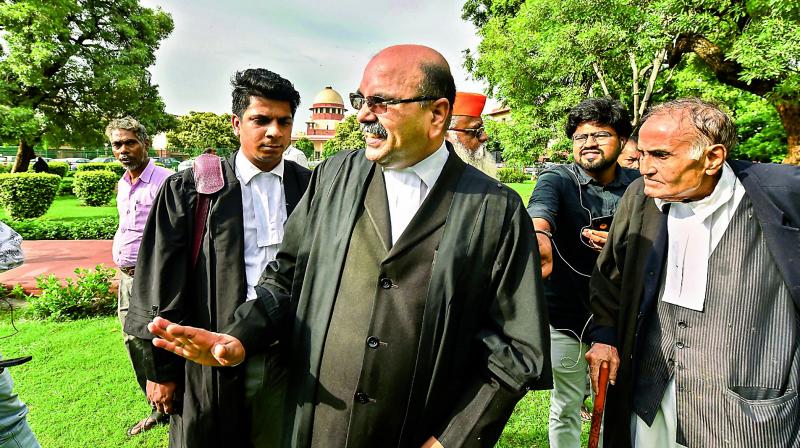Inner courtyard is ours, says Nirmohi Akhara
Daily hearing in Ayodhya case begins.

New Delhi: The Supreme Court on Tuesday began hearing a batch of cross-petitions staking claim to the disputed site at Ayodhya, with a Hindu sect Nirmohi Akhara opening the arguments, claiming sole possession over the “inner courtyard” of the disputed site, where the idols of Lord Ram are placed in Ayodhya.
While the Nirmohi Akhara has contended that the disputed site was the birthplace of Lord Ram, the Muslim side is asserting that it belonged to the mosque that was razed on December 6, 1992.
Seeking the possession and management of the “inner courtyard”, the Nirmohi Akhara told the five-judge Constitution Bench headed by Chief Justice Ranjan Gogoi that the core of the disputed site belonged to it and was in its possession since time immemorial.
It said it was managing it, including the worshiping by Hindus, till its management was “illegally” taken over by the Faizabad district magistrate in 1950 and handed over to the receiver.
At the outset the bench, that also comprises Justices S. A. Bobde, D. Y. Chandra-chud, Ashok Bhushan and S. Abdul Nazeer, declined a plea verbatim recording of the Ayodhya proceedings.
The bench is hearing a challenge to the September 30, 2010 verdict by the Allahabad high court under which two parts of the disputed 2.77 acres were given to the deity of Lord Ram and Nirmohi Akhara and one part was given to the Sunni Waqf Board. There are 13 cross-petitions challenging the HC’s judgment.
Staking sole claim to the disputed inner courtyard, including the sanctum sanctorum where the idols are placed, senior counsel Sushil Jain, appearing for the Nirmohi Akhara, told the court the outer ring of the disputed site known as “outer courtyard” having Sita Rasoi, Ram Chabutra and Bhandar Girah was never in dispute till the Sunni Waqf Board raised the issue in 1961.
The court asked him that since the disputed site was attached and handed over to the receiver in 1950 and there was limited right to offer worship, how could the Akhara claim possession of the “inner courtyard”.
Seeking removal of the receiver appointed after the management of the disputed site was taken over by the Faizabad district magistrate in 1950, Mr Jain said “none other than Hindus were allowed to enter and worship” and “no Mohammedan could ever enter the temple building since 1934”.
Mr Jain will continue his arguments on Wednesday.

